Hair Transplantation
The Goldberg Clinic is very proud to offer the most advanced technology in hair transplantation – the state-of-the-art SmartGraft™ system. Following our tradition of innovation in facial aesthetic and reconstructive surgery we are the very first clinic to offer SmartGraft™ technology in Canada.
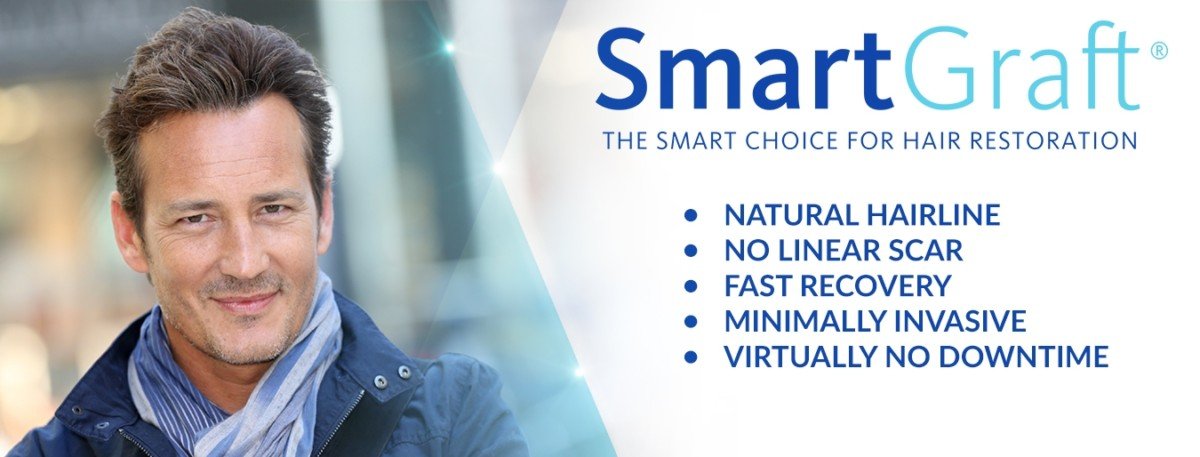
SmartGraft™ allows us to use the power of Follicular Unit Extraction (FUE) and Follicular Unit Transplantation (FUT) to provide a customized procedure designed to meet the individual needs and goals of each of our patients, and to obtain a completely natural-looking and beautiful result.

What are Hereditary Hair Loss, Male-Pattern Baldness and Female-Pattern Baldness?
Hereditary hair loss, also known as male-pattern baldness and female-pattern baldness, is the most common cause of progressive hair loss around the world.
Although many people don’t know this, hereditary hair loss affects many women as well, especially after pregnancy and menopause. Premature hail loss can have a profound effect on our emotional health: Hair loss impacts how old we appear to others, how healthy we look and how competitive we are in the job market. In both men and women, premature hair loss is known to cause significant psychological distress, lowered self-esteem and a reduced sense of attractiveness.
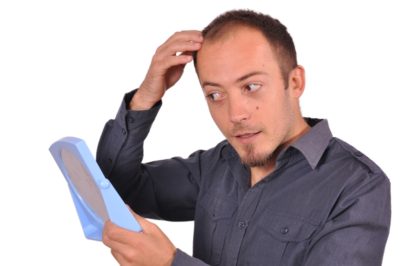
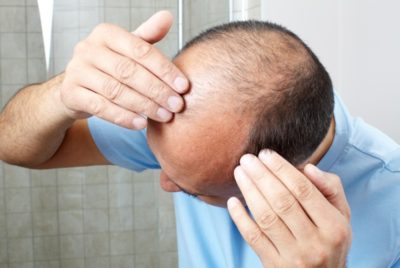
Causes of hereditary hair loss
Hereditary hair loss is a genetic condition passed down from generation to generation. Contrary to common belief, it can be inherited from both the mother’s side and the father’s side. The gene, or genes, responsible for male and female-pattern baldness increase the production of the hormone DHT in the scalp and the sensitivity of the hair follicles to this hormone. Exposure to DHT causes the hair follicles to atrophy over time, turning normal, healthy hair to thin, clear, short, almost invisible hairs, resulting in visible hair loss and, eventually, baldness. The medical term for hereditary hair loss is Androgenetic Alopecia.
Male-pattern hair loss
Moderate to severe hair loss affects 15% of men age 18-29, and more than 50% of men aged 40 – 49. Premature hereditary hair loss in men begins shortly after puberty and continues to progress into the 20’s, 30’s and 40’s. The hair loss follows a typical pattern, thinning out first along the temples and frontal hairline, and then at the crown and vertex of the scalp, eventually leaving only a band of hair along the sides and back of the scalp (the occiput), as shown in this diagram:

You can see that even with very advanced hair loss, the hair on the back of the scalp (occipital scalp) is stable and remains healthy for many decades. Men who have this hair loss pattern and have a strong family history of male-pattern baldness, typically do not need to see a doctor to make the diagnosis.
Female-pattern hair loss
Some form of hereditary hair loss affects as many as 50% of women over age 50 years, and often starts after pregnancy or menopause. It follows a different pattern than in men, affecting mostly the top, or crown, of the scalp, as shown below:
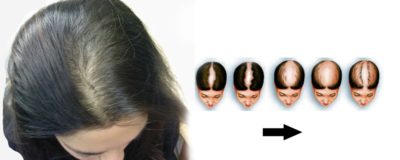
Unlike most men, women who experience hair loss should see their doctor, and may need a referral to an endocrinologist or dermatologist, to make sure there are no other, treatable, medical causes for hair loss. Some causes of hair loss in women are reversible with the right treatment.
Treatment of hereditary hair loss
You have probably already seen that there are many treatments for hair loss on the market, including shampoos, lotions, laser caps and combs, aroma therapy, dietary supplements, and injections. Many of these can be quite expensive. The bottom line is that almost none of these treatments work, and even when they do the improvement is so subtle that it isn’t worth your time or money. Always keep in mind that there is no treatment that can grow back new hair follicles once they have disappeared.
While you cannot stop hereditary hair loss, you can do your best to try and slow it down. You can, and should, maintain a healthy life style, eat a well-balanced diet (with vitamin supplements, if necessary), exercise regularly, control your weight, do what you can to reduce stress and get regular sleep. These actions are not only good for your hair, but are essential for the rest of your body and mind as well.
There are currently only 2 treatment options that are known to work for hereditary hair loss: Medications and Hair Transplants.
Medications
At this time, in North America only Minoxidil (Rogaine) and Finasteride (Propecia) are approved for the medical treatment of hereditary hair loss.
Both of these medications can slow down the rate of hair loss, and, in some patients, grow thicker and longer hair where hair follicles still exist. Finasteride is much more effective than Minoxidil.
Hair Transplants
Modern hair transplants are currently the best and most effective way to treat hereditary hair loss, in both men and women.
Hair transplantation does not create new hair follicles – what it does is redistribute (move) healthy, stable hair follicles from the back of the scalp to parts of the scalp that have thinning or no hair.
The procedure is divided into two parts: In the first part, healthy hair is taken from the back (occiput) of the scalp, where the hair is resistant to hair loss, in a process known as harvesting or extraction. In the second part, the harvested hair is transplanted to a new location on the scalp where we want new hair to grow. Both parts are performed in the surgeon’s office on the same day, and under local anesthesia.
Gone are the old days when surgeons grafted large plugs of hair into the scalp, resulting in obvious, tell-tale corn-rows of hair. Gone also are the days when surgeons harvested a large strip of scalp from the back of the head, leaving a large, noticeable scar. Both of these old techniques have been replaced by the methods of Follicular Unit Extraction (FUE) and Follicular Unit Transplantation (FUT).
Follicular Unit Extraction
Follicular Unit Extraction (FUE) is a technique that allows the surgeon to remove – or harvest – individual hair follicle units, one at a time, from the back of the scalp. Follicular units are naturally occurring groupings of hair follicles that contain either 1, 2, 3 or 4 individual hairs that normally grow together. Individual units are removed in such a way that there is no visible hair loss from the back of the scalp. The advantages of FUE are that, when done properly, the follicles are not damaged, the donor sites heal within a day or two and the scars are almost invisible. Unlike the older strip method, no scalpel is used, no stitches are required and there is no unsightly stretched scar on the back of the scalp.
Follicular Unit Transplantation
In the second step, the balding scalp is reconstructed by grafting the extracted hair follicles into the bald areas, called the recipient sites, to recreate a healthy hairline. This is the most important part of the hair restoration procedure and must be done by the surgeon with meticulous planning and great care. We use a method called Follicular Unit Transplantation (FUT) to carefully insert (transplant) by hand individual hair follicular units, one at a time, into tiny, separately created recipient sites. At our clinic, this part of the procedure is done under microscopic magnification and using microsurgical instruments. The direction, angle, density and placement of the hair follicles will determine the final appearance of the hairline and the success of the procedure. Careful planning and creation of the recipient sites by the surgeon is critical to obtaining a natural and beautiful hairline, especially in males.
What is SmartGraft™?

The SmartGraft™ system is a mechanical device that assists the surgeon in extracting the individual follicular units, one at a time, from the back of the scalp. The key to its success is that the system has been carefully engineered to provide very consistent results, minimal trauma to the hair follicles, and to maximize survival of the grafts until transplantation. Unlike other systems, such as ARTAS™, SmartGraft™ is NOT a robotic device that performs hair transplantation. It is the surgeon who performs the hair extraction with the assistance of the SmartGraft handpiece, which also keeps the follicles moist and at a controlled temperature after extraction. Recipient site creation and graft implantation are still done by the surgeon, by hand, and are completely customized to each patient.
Neograft™ is a similar assistive device that is in wide use. The Neograft™ device is based on an older French design and has remained unchanged for over 20 years. The engineers at SmartGraft™ incorporated feedback and recommendations from countless transplant surgeons over the years to come up with a much more modern and reliable design. Most important to the success of the reconstruction, SmartGraft™ incorporates build-in mechanisms to carefully move, count, and protect the hair follicles from trauma, and to prevent drying out during the extraction.
ARTAS™ is another system used for hair transplantation. Unlike Neograft and SmartGraft, the ARTAS machine is a computer-controlled robotic device that automatically cuts around the hair follicles, and then later creates the recipient sites based on pre-programmed hairline patterns. The actual removal of the hair follicles must still be done by the hand of a technician, as does the actual implantation of the grafts into the recipient sites. The ARTAS system has been shown to damage as much as 20% of the follicles that are harvested, is less customizable and offers no real advantage over a well-trained, experienced human surgeon.
Based on extensive research and considering all other options on the market, we at the Goldberg Clinic are completely convinced that SmartGraft™ is superior to all other technologies presently available for hair transplantation. This is why we decided to approach the company and asked them to make SmartGraft™ available in Canada.
We are the first, and presently the only clinic to offer the SmartGraft™ technology in Canada.
Smartgraft Advantages
- No scalpel – no sutures – no staples
- No linear scar
- Minimal recovery time
- Back to most normal activities the next day
- Faster healing
- Virtually no discomfort
- Advanced harvesting of hair follicles
- Less damage to the grafts
- Less time in the doctor’s office
- Possible to restore a complete hairline in one session
- Ideal for both men and women
- Completely natural result
- Allows more options
- Ideal for scalp
- Eyebrows
- Beards
- Eyelashes

Complications of hair transplantation
Modern hair transplantation is an extremely safe and well-tolerated procedure. Using FUE and FUT, the technique is considered minimally-invasive, and is performed in the surgeon’s office under local anaesthesia. Sedation is not usually necessary, there is minimal bleeding, and the patient is able to get up and move around if they need to. The patient will go home after the procedure, and can return to most activities the next day. There is almost no down-time. The hair can be gently washed and shampooed after 2 days.
Just like any medical procedure, there are possible complications. Fortunately, with hair transplantation the risk of complications is extremely small:
- There is a less than 1% risk of infection.
- There will be a very small amount of bleeding at the donor and recipient sites at the time of the procedure, and sometimes the day after.
- There will be some swelling, redness and mild bruising in the donor and recipient areas, and sometimes in the forehead as well, which may last for 1 or 2 days.
- The fresh grafts may be pulled out or damaged if the scalp is accidentally rubbed or scraped in the first 3 or 4 days.
- Some of the hair follicles will not survive the transplantation, but we generally expect that more than 95% will.
Important points to remember:
- Hair transplants don’t stop hair loss from happening in the rest of the scalp. Hair loss will continue at the normal rate everywhere else, but the transplanted hairs will be stable and continue to grow in their new location for decades to come.
- The new follicle grafts will completely shed their hairs after 1 – 3 weeks, and it will look like the grafted hairs have disappeared. This is not a risk or a complication, but an expected and normal process called telogen effluvium. The hairs start to grow back after about 3 months.
- It takes new hairs 9 – 12 months to completely grow back after the procedure.
- It is strongly recommended that men start taking Finasteride (Propecia) before the procedure and continue indefinitely afterwards.
Who should not have a hair transplant?
You are not a good candidate for a hair transplant if:
- You are not able to lie flat on your stomach for at least 2 hours.
- You are taking blood thinners, including Aspirin, Heparin and Warfarin.
- You have no stable hair on the back of your head (occipital scalp).
- Your hair loss is due to an undiagnosed or untreated medical condition.
- You are in your early twenties (although this is up for discussion).
- You plan to razor shave your head in the future.
Applications of hair transplantation
Hair transplantation is the most effective to way to treat hair loss in:
- Male scalp

- Female scalp

- Eyebrows
For eyebrows that are overly thin by nature or from over-aggressive plucking, or from scarring
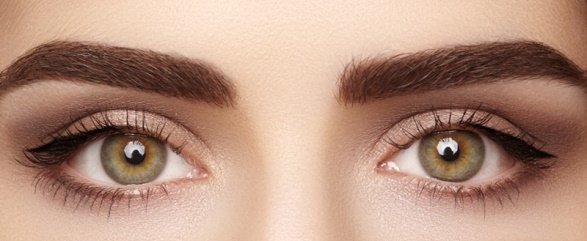
- Facial hair
For men who desire a fuller beard
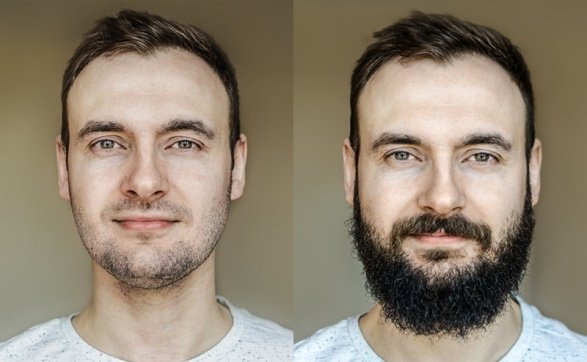
- Eyelashes
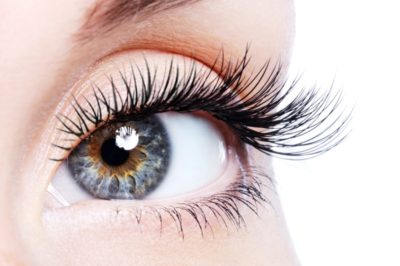

 Face
Face Body
Body Breast
Breast Non-Surgical
Non-Surgical Dr. Cory S. Goldberg
Dr. Cory S. Goldberg Our Staff
Our Staff Policies
Policies Media
Media Reviews
Reviews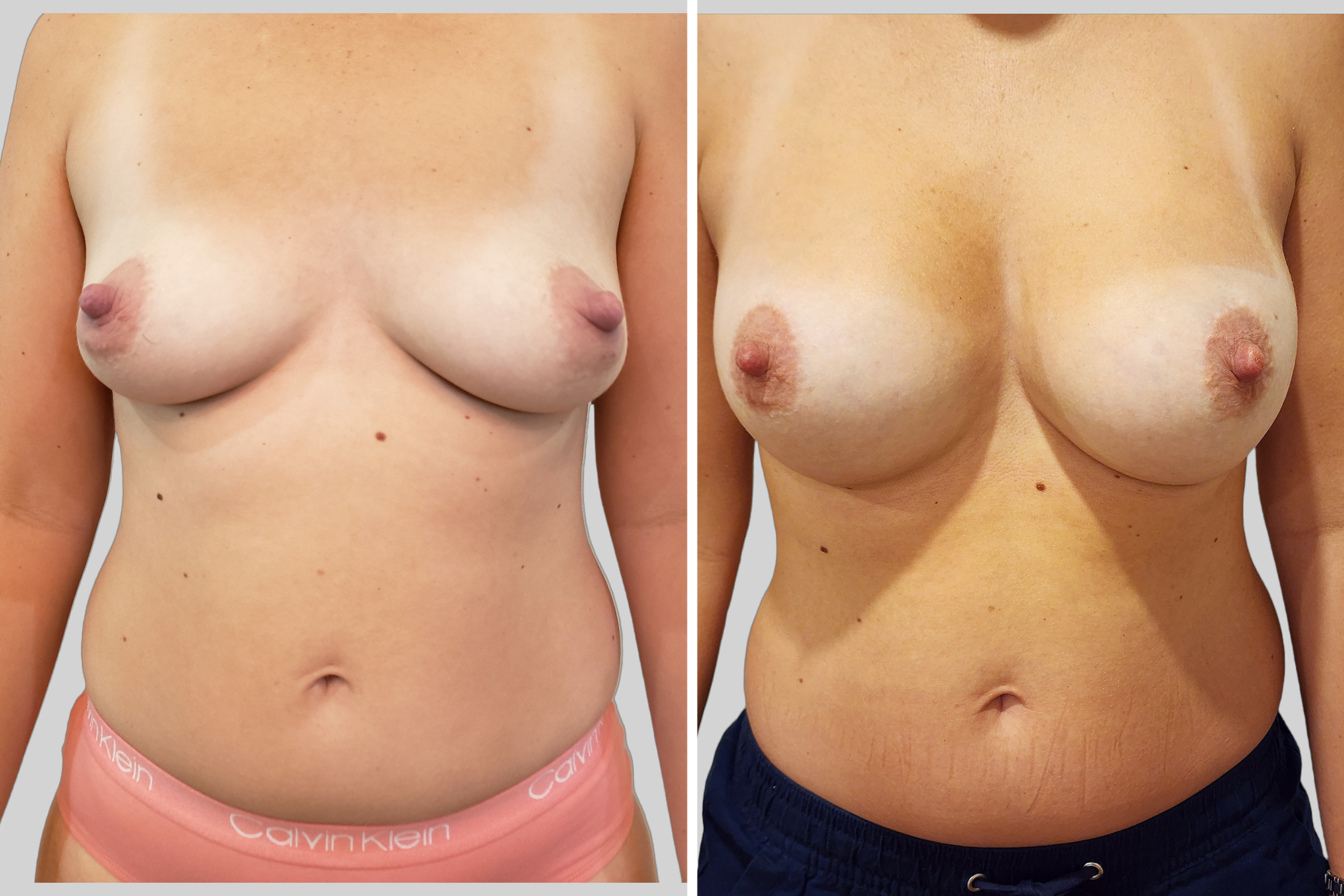 Breast Gallery
Breast Gallery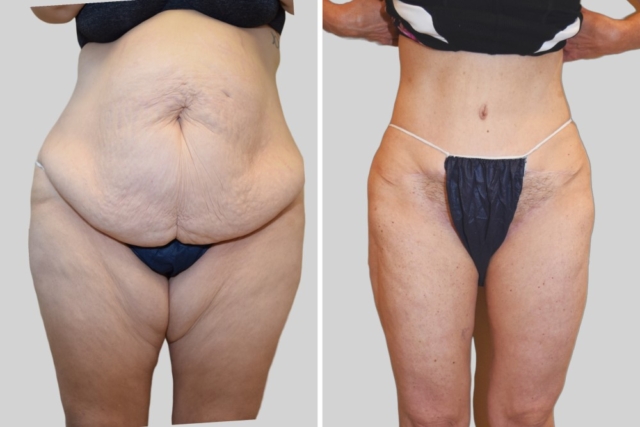 Body Gallery
Body Gallery